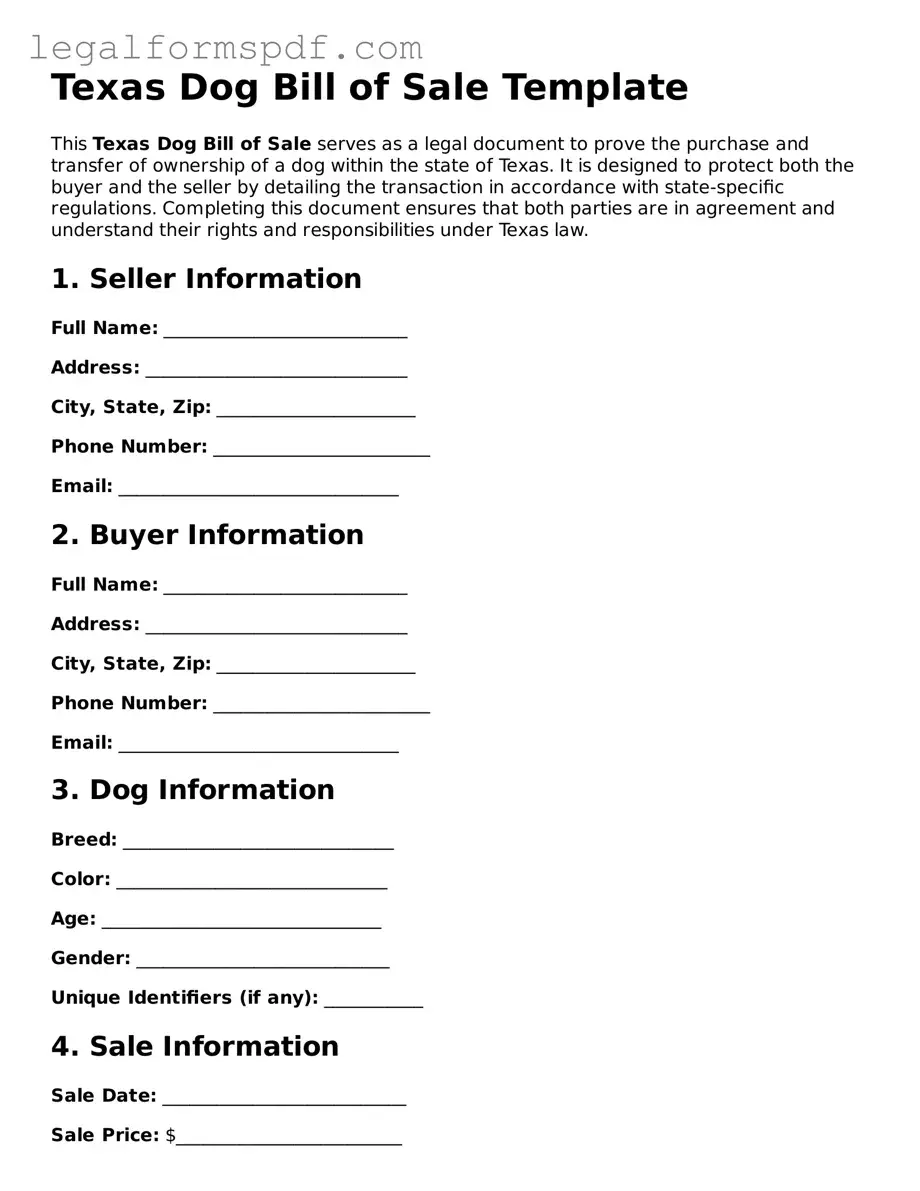Texas Dog Bill of Sale Template
This Texas Dog Bill of Sale serves as a legal document to prove the purchase and transfer of ownership of a dog within the state of Texas. It is designed to protect both the buyer and the seller by detailing the transaction in accordance with state-specific regulations. Completing this document ensures that both parties are in agreement and understand their rights and responsibilities under Texas law.
1. Seller Information
Full Name: ___________________________
Address: _____________________________
City, State, Zip: ______________________
Phone Number: ________________________
Email: _______________________________
2. Buyer Information
Full Name: ___________________________
Address: _____________________________
City, State, Zip: ______________________
Phone Number: ________________________
Email: _______________________________
3. Dog Information
Breed: ______________________________
Color: ______________________________
Age: _______________________________
Gender: ____________________________
Unique Identifiers (if any): ___________
4. Sale Information
Sale Date: ___________________________
Sale Price: $_________________________
5. Terms and Conditions
Both parties agree to the terms and conditions as follows:
- The seller guarantees that they are the lawful owner of the dog and have the right to sell it.
- The dog is being sold in an "as is" condition, unless otherwise specified in this document.
- Any representations made by the seller about the dog's health, temperament, or pedigree are documented herein.
- The buyer has the right to examine the dog before completing the purchase, allowing for an informed decision.
- The seller is not responsible for the dog post-sale, including any behavioral or health issues not disclosed before the sale.
6. Signatures
This document is legally binding upon signature by both parties. It acknowledges that all the information provided is accurate to the best of their knowledge and is in full agreement with the terms described.
Seller's Signature: ___________________________ Date: ___________
Buyer's Signature: ____________________________ Date: ___________
Legal Notice
All parties acknowledge that this document does not constitute legal advice and that they have the right to seek legal counsel. The Texas Dog Bill of Sale complies with relevant Texas laws regulating the sale of animals within the state. For specific legal advice or concerns, it is recommended to consult with a legal professional.
